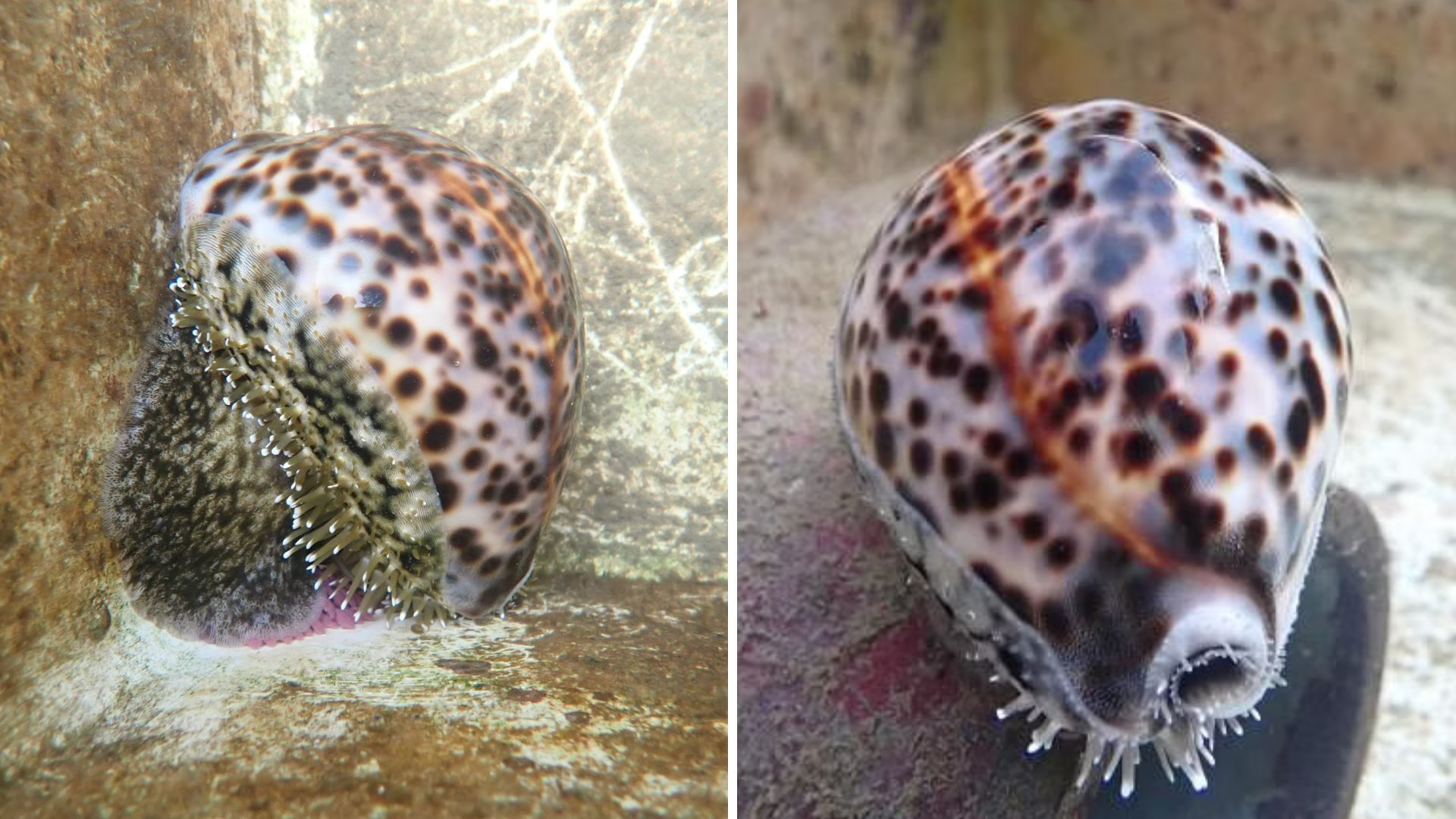SINGAPORE: In a groundbreaking achievement, marine biologists from the Tropical Marine Science Institute (TMSI) at the National University of Singapore have successfully reared the tiger cowrie (Cypraea tigris), a large sea snail native to Singapore waters, to adulthood for the first time.
This milestone was documented in a recent study published in the Molluscan Research journal, marking a significant advancement in the conservation efforts for this endangered species.
The Tiger Cowrie Snail
The research team, led by Ms. Teresa Tay, faced numerous challenges, including a high mortality rate among the larvae due to algae growth on their shells.
After 25 failed attempts, they finally succeeded in breeding the tiger cowrie, with eight juveniles from the 26th batch surviving to adulthood. The study revealed that using finer-filtered seawater and antibiotics drastically reduced algae growth, allowing the larvae to develop further.
The tiger cowrie, known for its attractive shell, has been overharvested by shell collectors and aquarium hobbyists, contributing to its rarity in Singapore’s waters.
Additionally, habitat loss and destructive fishing practices have decimated the coral reefs where these snails thrive, further endangering the species.
Opening up new possibilities
The successful rearing of the tiger cowrie to adulthood opens up new possibilities for conservation and sustainable breeding for the aquarium trade.
Dr Jani Tanzil, a senior research fellow at TMSI, emphasized the potential for captive-bred cowries to reduce the demand for wild-caught specimens.
While the cost for captive-bred cowries may initially be higher, improvements in mariculture techniques could narrow the price gap.
Sunbeam Aquarium, a local wholesale exporter, has already recognized the value of marketing captive-bred tiger cowries, noting that environmentally conscious customers are willing to pay a premium for products that reduce environmental impact.
This breakthrough highlights the resilience and innovation of marine biologists and offers a glimmer of hope for the conservation of the tiger cowrie and other endangered marine species.

